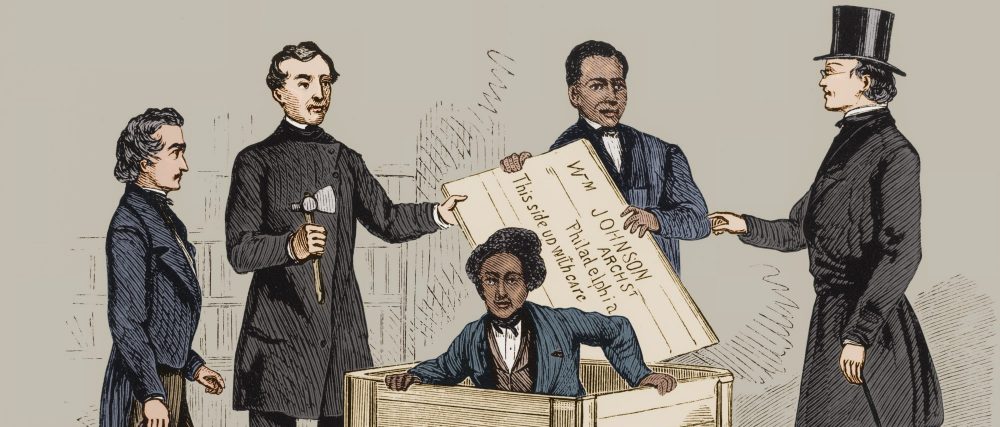- Video clip: Douglass & North Star [PBS]
- Video clip: Douglass & pacifism [PBS]
- Brief profile (by David Blight) with links to published autobiographies (1845, 1855, 1881/92) [DOC SOUTH]
- Research engine records [HOUSE DIVIDED]

The power of first-hand accounts
“Many slave owners came to take greater interest in the lives (and general welfare) of American-born slaves –with whom they had sometimes grown up –than in those of newly purchased Africans who appeared strange and ‘savage.’ More important still, the growing number of blacks in America, the increased size of holdings, and the more equal sex ratios provided greater opportunities for finding spouses than had previously existed. During the half century before the War for Independence, second- and third-generation American slaves built a new system of family relations to replace that shattered by the slave trade; basic family patterns that would persist through the antebellum period became established, patterns that resembled in broad outline those found among white Americans but that differed from them in important specifics.” –Peter Kolchin, American Slavery, p. 50
Primary Sources
Secondary Sources
Cultural Sources
Slave Life at Mount Vernon (Fairfax Co Public Schools)
“Roots” (1977)
Birth of a Nation (1915)
Gone With the Wind (1939)
Mandingo (1975)
Roots (1977)
Glory (1989)
Amistad (1997)
Twelve Years a Slave (2013)
Harriet (2019)
“Although precise figures must remain elusive, according to the best current estimates a total of 10 to 11 million living slaves crossed the Atlantic Ocean from the sixteenth through the nineteenth century. (Since others died in wars and in transit, Africa’s total population loss was much greater). As David Eltis has shown, the forced migration of slaves to the Americas significantly exceeded the voluntary immigration there of free persons until the 1830s, and the cumulative total of African migrants exceeded that of Europeans until the 1880s. America absorbed relatively few of these Africans. The great bulk –more than 85 percent of the total– went to Brazil and the various Caribbean colonies of the British, French, Spanish, and Dutch. Others went to the Spanish mainland. The United States, or more accurately for most of the slave-trade years the colonies that would later become the United States, imported only 600,000 to 650,000, some 6 percent of all the slaves brought from Africa to the New World. From this small beginning, however, emerged by far the largest slave population in the Western Hemisphere.” (Peter Kolchin, American Slavery, p. 22)
Roots (1977)
Roots (2016)
Amistad (1997)
Welcome to Dickinson Blog. This is your first post. Edit or delete it, then start blogging!